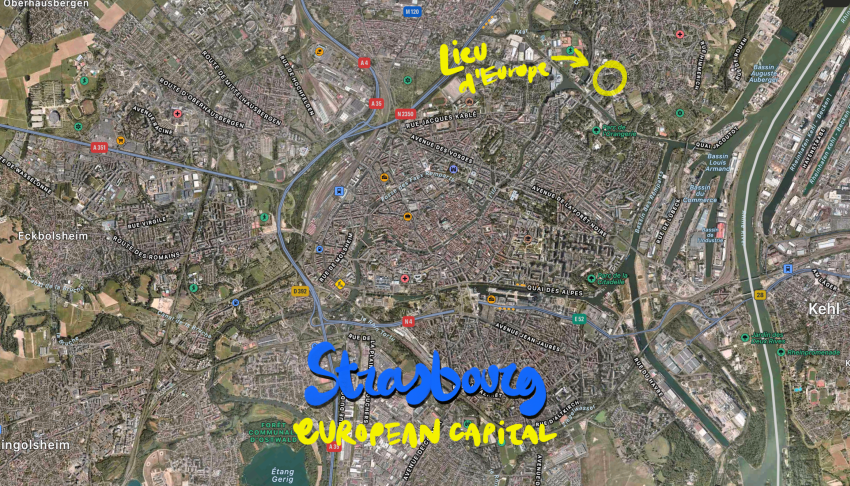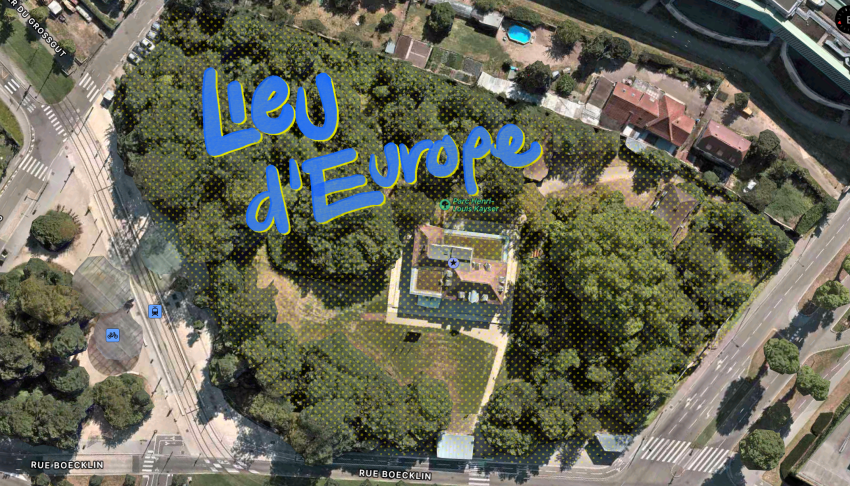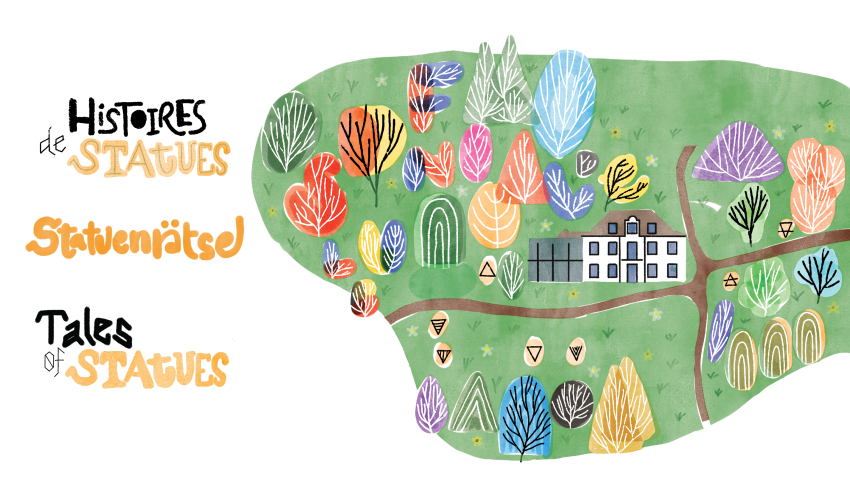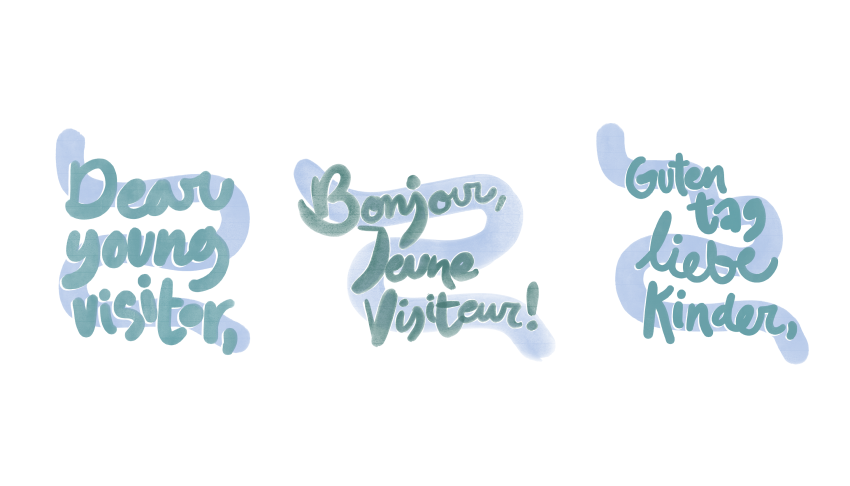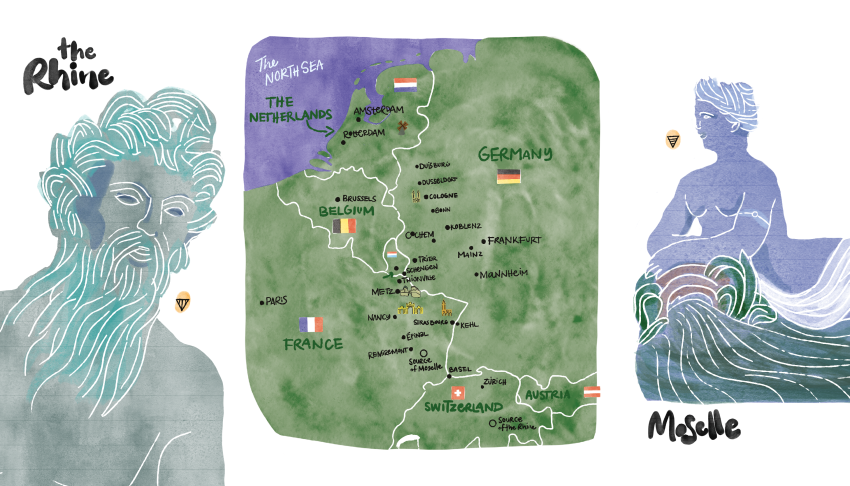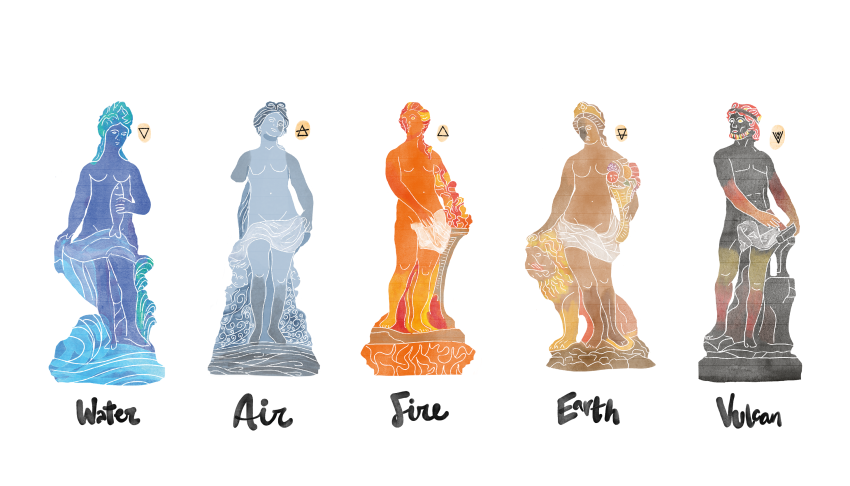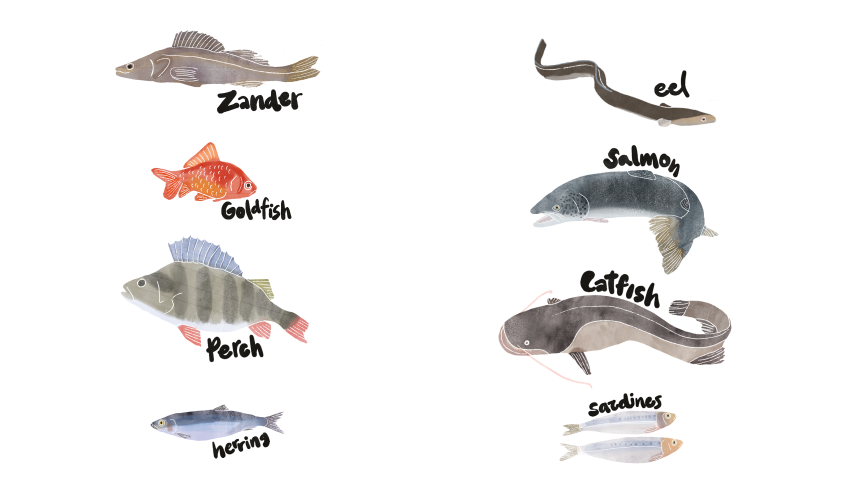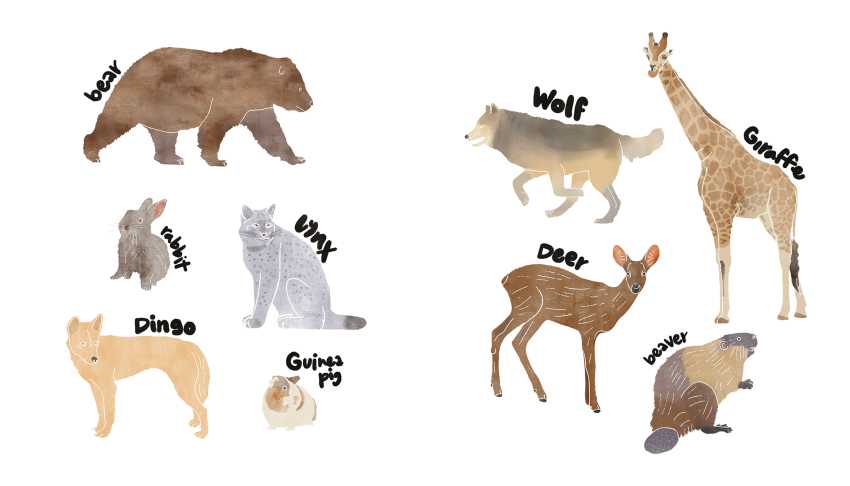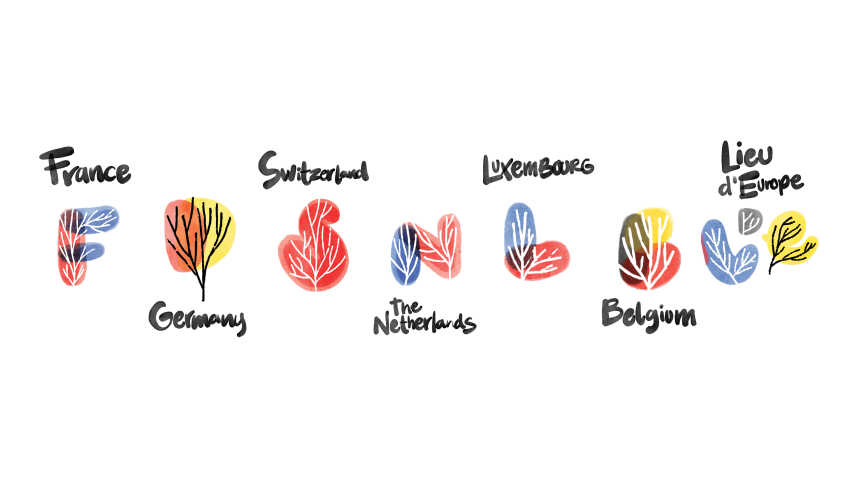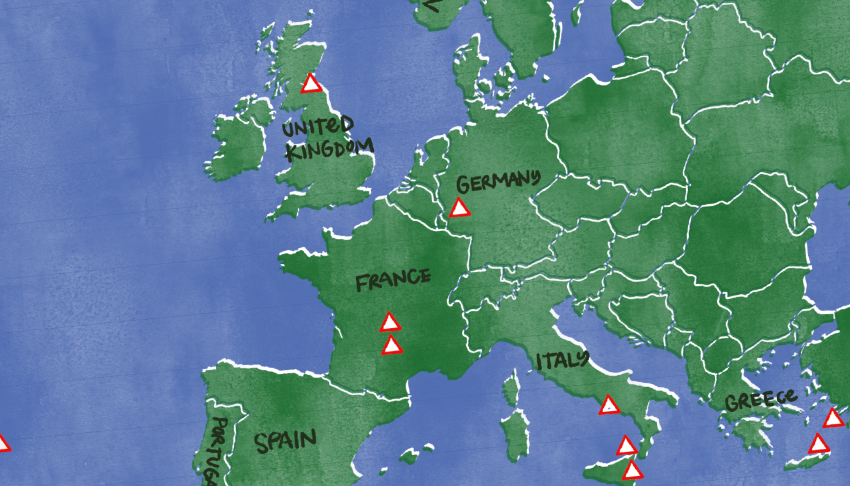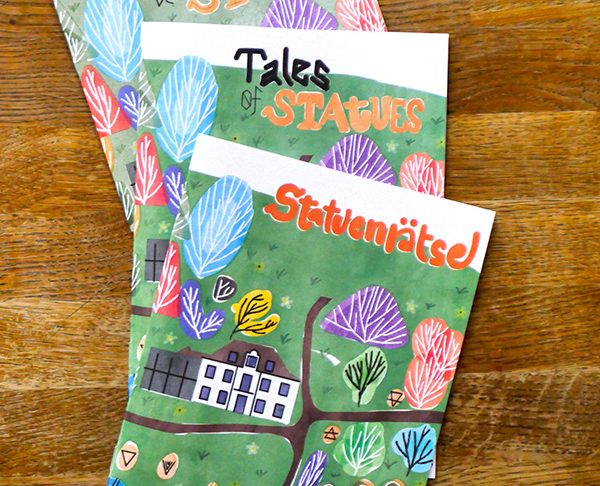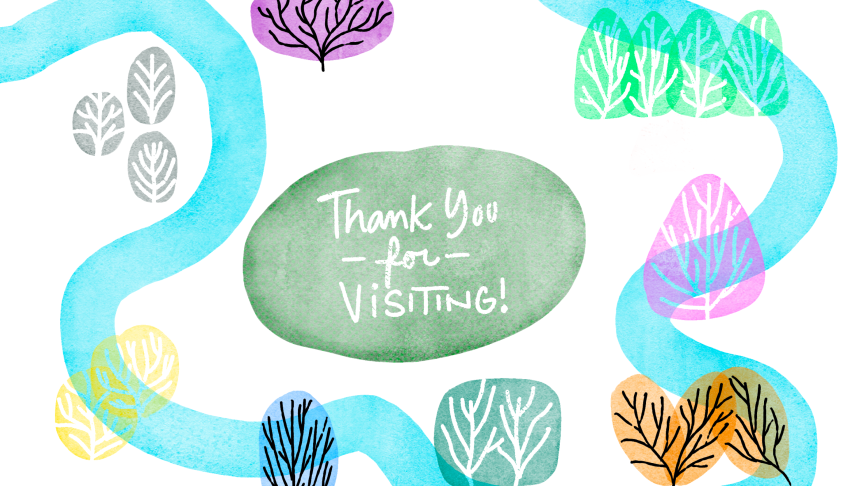Histoires de Statues at Lieu d’Europe
Year: 2022 / Client: Lieu d’Europe / Tools: Procreate, Photoshop, InDesign
In the summer of 2021, the city of Strasbourg had several 18th-century statues relocated to the gardens of Lieu d’Europe, a cultural centre located near the Council of Europe and the European Parliament, that is dedicated to the history of the European Institutions that call Strasbourg home. The history behind the statues is not well documented, but what little we know of them is that they represent the natural elements: fire, earth, air and water. But the most important pieces are the pieces inspired by the two most important rivers in the region, the Moselle and the Rhine.
To invite the thousands of children that visit the gardens every year to discover these statues, Lieu d’Europe invited me to illustrate a booklet with games and activities.
Watercolour was the main medium for the project, as the theme behind the two main statues is water. It was also important to invite the children to discover the garden subtly, so the actual plot of the land where Lieu d’Europe stands served as the cover for the booklet.
The booklet had to be made available in French, German and English, the three most prominent languages in Strasbourg, as Lieu d’Europe welcomes visitors from all over the region.
You will notice that the cover resembles the layout of the gardens with the main building’s relative position to the trees and the paths within it. But there are hints too, that guide the visitors and a few Easter Eggs. The trees in multicoloured trees represent the passing of the seasons and also the diversity of peoples and cultures in Europe, but not only that! There are a few spots in orange with triangles on top of them because the cover is also a map!
Next to each statue on the booklet, there’s a triangle—taken from the alchemic symbols for the elements— to represent them. This way, it’s easier to find the statues in the gardens when using the cover as a visitor’s guide. The light orange colour of the symbols is the actual colour of the stone used to carve the statues 200 years ago, and the elements of each statue define the colour palette used.
The Rhine and the Moselle ask the children to draw the rivers on the map from their sources; the Water Statue asks them to circle the fish that live in the region; the Earth Statue invites them to cross out the animals that are not native to the river basins; and finally, Vulcan wants them to match the name to the volcanoes across Europe.
Histoires de Statues is available for free since June 2022 at Lieu d’Europe.
